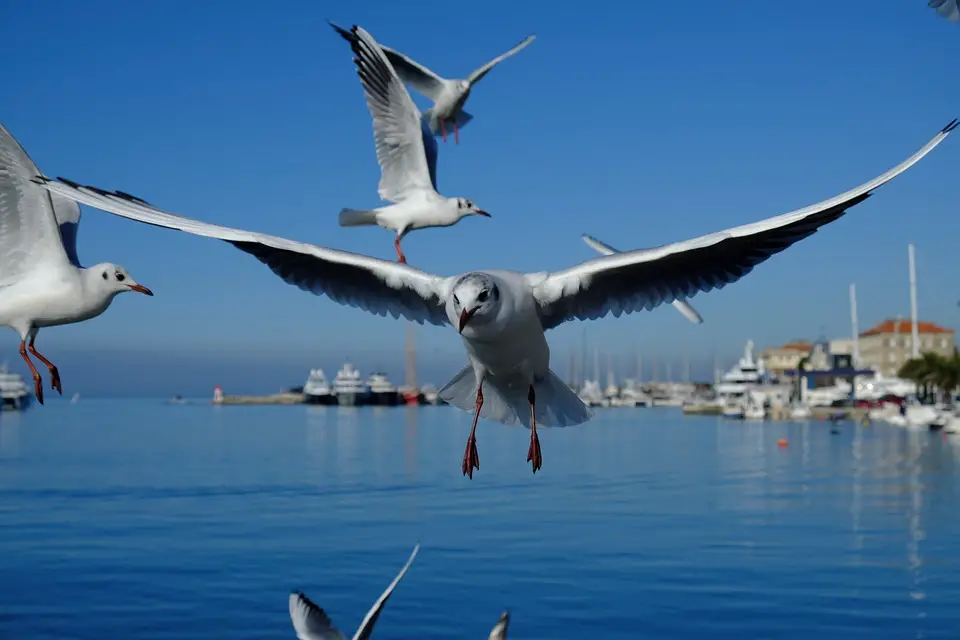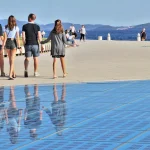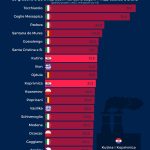As Morski writes, the Institute of Economics in Zagreb recently conducted the first comprehensive study called: “The vulnerability of local self-government units of the Republic of Croatia to tourism activities” which reveals interesting trends related to the exposure of the Croatian economy and local units to tourism activities and trends. The study was implemented as part of the Mastercard project Uplift, which is intended for the development of micro, small and medium enterprises with a focus on tourism.
The results of the study, made as a step in promoting sustainable tourism and integrating tourism into the broader context of the country’s overall economic development, were presented at a panel discussion.
Croatian tourism and the country’s GDP
Tourism is the most important Croatian economic sector. Back in pre-pandemic 2019, tourism activity in Croatia directly generated 11.8 percent of the country’s total GDP. At the same time, the gross value added of tourism activities in that year amounted to a massive 82.8 billion kuna, which is 24.4 percent of the total gross value added that year. Croatia is also much more dependent on tourism revenues than its Mediterranean competitors are. As such, tourist revenues back in 2018 and 2019 amounted to as much as 18.3 and 21 percent of GDP, and in 2020 and 2021 were reduced to 8.9 and 15.8 percent of GDP due to the negative effects of the coronavirus pandemic on tourist and travel demand. Even such reduced revenues from tourism in the two pandemic-dominated years were still, when expressed as a share of GDP, by far the largest in the entire European Union (EU).
A study by the Institute of Economics in Zagreb further analysed the situation as it was from 2012 to 2021.
Some of the interesting data from the study shows that a comparison of the values of the seasonality index in 2021 compared to 2012 suggests that the shortening of the tourist season was recorded by local units in the Dalmatian hinterland that have started to engage in tourism more intensively during the summer tourist season.
When the value of the index of vulnerability to the concentration and seasonality of Croatian tourism is observed, it grows across most local units in the analysed period. This is happening because the demand for Croatian tourist products is growing intensively, so the concentration of demand in a large part of local units is increasing. The most vulnerable are the local units of Zadar County, followed by Split-Dalmatia County, Dubrovnik-Neretva County, Sibenik-Knin County and Istria County. With only Istria County standing out, it’s obvious that the Dalmatian coast is extremely vulnerable to any alterations when it comes to tourism.
In addition, the study shows that the share of private accommodation in terms of total accommodation capacities has increased significantly in the vast majority of local units, while the share of accommodation in hotels, hostels and camps is declining. The most unfavourable structure of accommodation capacities is recorded by Split-Dalmatia County, which has 87.8 percent of private accommodation capacities, and the most favourable is the City of Zagreb, with 52.7 percent of accommodation capacities in hotels, hostels and camps.
Compared to the competition, the demand for Croatia is stronger
Compared to 2012, the number of beds per capita increased by 38.3 percent, which is the largest increase in the concentration of accommodation facilities among Mediterranean countries. At the same time, the number of tourist overnight stays increased by 38.2 percent in the period from 2012 to 2019, reaching 7.05 million overnight stays in 2019.
“The good news is that, compared to the competition across the rest of the Mediterranean, Croatia is also recording a significant increase in demand for its tourism. If we analyse this increase in intensity by counties in more detail, we come to an interesting conclusion: the wave of interest in Croatia spilled over from the usual coastal destinations to the interior, to locations not so much engaged in tourism – such as units in Istria, Dalmatia, Lika and Gorski Kotar, and even in the continental part of the country,” pointed out Maruska Vizek from the Institute of Economics in Zagreb.
“We’re aware of the challenges in the structure of accommodation focused on private renters and the further development of tourism should go in the direction of building accommodation facilities of this type that will allow the extension of the tourist season and create additional value. In coastal areas, the emphasis should be on quality, while in areas that are becoming increasingly interesting for tourism, such as Baranja, Lika and Gorski Kotar, we need both quantity and high quality of accommodation,”said Slavko Steficar from the Ministry of Tourism and Sport.
For more, make sure to check out our travel section.









